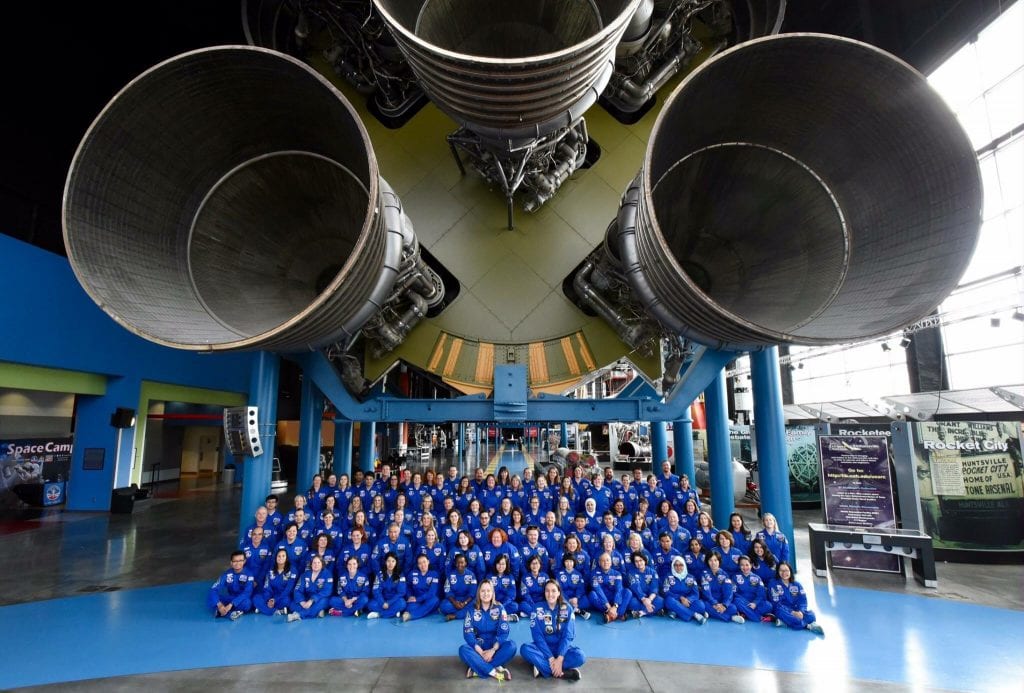Danielle Werts, an AP Environmental Science and Biology teacher at Golden Valley High School, was one of 200 teachers from 33 countries and 45 U.S. states and territories to participate in the Honeywell Educators at Space Academy (HESA) program this month.
HESA is a program that brings together educators from around the world to attend space camp at the United States Space and Rocket Center (USSRC) in Huntsville, Ala. for two separate sessions across two weeks each summer.
“I am very thankful for being chosen,” said Werts, who is also the advisor for Golden Valley’s Science Olympiad. “It was a wonderful, wonderful week of collaboration and trying new things… Each day was better than the next.”
The scholarship program works to inspire math and science teachers to become more effective science, technology, engineering and math (STEM) educators and to encourage students to pursue STEM careers.
“One of the things Honeywell said over and over again is: ‘We invest this time and money into these teachers because STEM is so important because you are teaching the next generation of scientists and engineers and the people that actually have to get out there and create things,'” Werts said.


Created by Honeywell and the USSRC in 2004, the astronaut training program guides teachers through 45 hours of classroom and laboratory instruction focused on science, space exploration and leadership skills development.
Teachers also complete astronaut-style challenges and team building exercises like high-performance jet simulations, scenario-based space missions, coding challenges, water survival training and more.
Werts learned about the program from teachers she met at professional development conferences throughout the state. In the fall, she decided to apply for the program.
“They only took 200 and 100 from the United States so it was pretty amazing getting accepted into the program,” Werts said.
Werts said a major element of the week-long program were team building exercises that urged the educators from different states and countries to work together and communicate across language barriers.
“That experience of working in a team was a really good reminder of what’s happening in our classrooms,” she said. “I’m doing one of the exercises on the first day of class. They’re activities that get kids thinking and talking and collaborating.”
The teachers also completed hands-on activities like programming and launching rockets to track their trajectory, programming different robotics and creating a heat-shield to protect an egg from a blowtorch’s flame.


“I’ve never done rocketry or programmed anything,” Werts said. “For me both of those activities [rocketry and robotics] were wonderful because I’m the advisor for Science Olympiad at my school and I did not know a lot about it.”
During the week, educators participated in survival challenges like zip lining for a quick escape into water and simulations like helicopter abandonment where they had to evacuate from a tube that was dropped into the water.
They also learned what life was like in space by sitting in a multi-access gravity simulation chair and completing two mission simulations in rooms set up to look like parts of the Space Station, rockets or Control Center.
“In one of those missions I suited up in a big white suit and they put me in a zero gravity chair and I was trying to put things together outside of the station,” Werts said. “At one point I was working upside down and it was really difficult.”


In another simulation, Werts acted as the Mission Operations Director (MOD) as her team completed the “Mission to Mars.”
“I did the countdown and wore a headset… everything you see in the movies,” Werts said.
A favorite part of the program for Werts was hearing Homer Hickam, Jr., the author of “Rocket Boys,” speak. His memoir was later the inspiration for the movie “October Sky.”
“The basis of his speech was you have to keep trying things, it was so driven for STEM,” Werts said. “He was saying that these are your students and they have to try things, they have to experiment, they have to use their creativity.”
Overall, the program connected Werts with resources and teachers throughout the world and inspired her to integrate new lessons and programs into her teaching at Golden Valley.
“I think going to summer professional development is probably the best thing teachers to do for themselves… it reinvigorates a teacher who is working in the classroom,” she said. “I really came back thinking ‘Oh my gosh, I am integrating so much more into my Science Olympiads program and I need to add a robotics program at Golden Valley.'”
[email protected]
661-287-5575
On Twitter as @_ChristinaCox_








